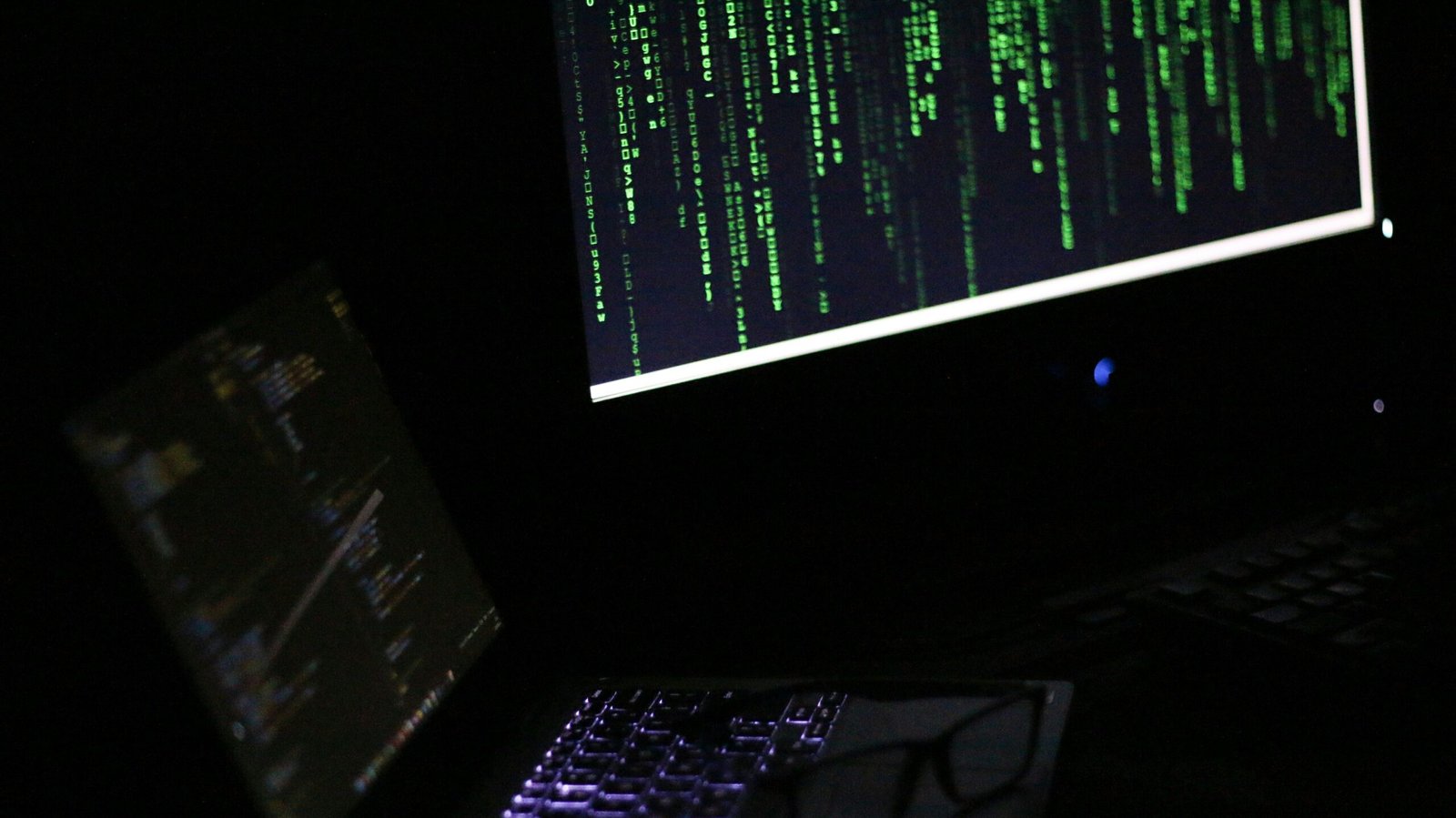Physical Address
304 North Cardinal St.
Dorchester Center, MA 02124
Physical Address
304 North Cardinal St.
Dorchester Center, MA 02124

AI in cybersecurity and biosecurity isn’t just a buzzword—it’s the reason hackers often seem one step ahead. Here’s a sobering truth: while you were reading this sentence, AI-powered attacks probed your company’s network defenses approximately 12 times.
AI in cybersecurity and biosecurity has completely changed the cybersecurity game. No longer human vs. human, we’re now watching it lead to a digital arms race—AI battling AI, with the pace accelerating daily.
What you’ll discover here is exactly how AI in cybersecurity and biosecurity is transforming both landscapes simultaneously—introducing unprecedented threats, but also enabling powerful new defenses that were previously unimaginable.
The most forward-thinking security teams aren’t just deploying tools—they’re adapting to AI in cybersecurity and biosecurity by fundamentally rethinking what security means in this new AI-driven era.
But here’s what keeps me up at night: what happens when AI in cybersecurity and biosecurity evolves faster than our ability to control it? When machine intelligence merges in unexpected ways that catch even experts off guard?

CISA isn’t just another government acronym – it’s America’s cyber guardian. As threats evolve at lightning speed, CISA has embraced AI as its secret weapon in the fight against digital attacks.
Their organizational structure now includes dedicated AI teams working alongside traditional security specialists. These tech-savvy experts deploy cutting-edge AI cybersecurity tools that can analyze millions of potential threats in seconds – something human analysts could never achieve alone.
The integration of AI and cybersecurity at CISA has transformed how they protect critical infrastructure:
A security analyst at CISA told me recently: “What used to take us days now happens automatically in minutes. We’re focusing on strategy instead of drowning in alerts.”
Working at the Cybersecurity Infrastructure Security Agency has fundamentally changed. New job descriptions specifically seek AI expertise alongside traditional security backgrounds. CISA careers now span a fascinating spectrum from pure data science to specialized AI-security hybrid roles.
Their recent AI initiatives focus heavily on biosecurity threats – teaching systems to recognize patterns that might indicate emerging biological dangers with potential cybersecurity dimensions. (

Let’s talk about something that’s reshaping our digital defense landscape right now. AI isn’t just a buzzword anymore—it’s fundamentally transforming how we protect our critical systems and biological infrastructure.
AI-powered threat detection tools are revolutionizing how security professionals identify and respond to cyber attacks. They’re analyzing patterns and flagging anomalies faster than any human could dream of. And here’s the kicker—these systems are getting smarter every day.
But this isn’t just about keeping hackers out of your email. The Cybersecurity and Infrastructure Security Agency (CISA) has incorporated AI technologies into its organizational structure, creating specialized teams focused on cybersecurity automation and threat intelligence.
The same AI technologies protecting our networks are now being deployed against emerging biosecurity threats. Think about it—algorithms that can predict pathogen mutations or detect unusual biological signatures before they become crises.
The hard truth? The same AI tools protecting us can be weaponized. Adversaries are using machine learning to develop more sophisticated attacks, making artificial intelligence cybersecurity policy a critical battlefield.
CISA’s AI initiatives represent just the beginning. Security professionals working at the Cybersecurity Infrastructure Security Agency are now required to understand not just traditional defense mechanisms, but how AI integrates with them.
This convergence of cybersecurity and AI integration isn’t optional anymore—it’s essential for national security frameworks that can withstand tomorrow’s threats.

Ever wonder who’s fighting the digital bad guys behind the scenes? That’s CISA – the Cybersecurity and Infrastructure Security Agency. Born in 2018, this agency wasn’t just another government afterthought. It emerged as a direct response to the escalating cyber threats targeting American businesses, utilities, and government systems.
CISA didn’t appear out of thin air. It evolved from the National Protection and Programs Directorate (NPPD) when Congress realized we needed a more focused, powerful defender for our critical infrastructure. And they weren’t wrong – cybersecurity threats have skyrocketed since then.
At its heart, CISA has one job: protect America’s digital and physical infrastructure from threats. They’re the folks who:
What makes CISA unique is their position as the quarterback of national cybersecurity efforts. They bridge government agencies, private companies, and international partners to create a unified defense strategy.
CISA jumped on the AI train early. They recognized AI’s dual nature – both a powerful security tool and a potential threat vector. Their AI-powered threat detection systems now analyze patterns that human analysts might miss, identifying potential attacks before they happen.

Ever wondered how CISA actually runs its operation? The Cybersecurity and Infrastructure Security Agency doesn’t just wing it when protecting our digital borders. They’ve built a smart machine with specialized divisions that work together.
At the top sits the Director (currently Jen Easterly), who reports directly to the Secretary of Homeland Security. Below her, CISA breaks into five key operational divisions:
What makes CISA special isn’t just its structure but how AI weaves through each division. Their cybersecurity teams increasingly rely on AI automation to handle the thousands of alerts generated daily. Meanwhile, their risk management specialists use AI to predict emerging threats before they materialize.
Unlike many federal agencies, CISA maintains a relatively flat hierarchy that enables quick decisions when cyber threats emerge. This structural agility has proven crucial as they scale up their AI cybersecurity initiatives to match increasingly sophisticated adversaries.

CISA’s been making some serious moves in the AI space lately. In 2023, they launched their Artificial Intelligence Safety and Security Framework, which isn’t just another boring government document—it’s actually a practical roadmap for organizations trying to navigate AI risks.
What’s cool is how CISA’s approach balances innovation with security. They’re not trying to slow down AI advancement; they’re working to make sure it happens safely. Their framework addresses everything from data poisoning to model theft, giving cybersecurity professionals real tools to work with.
The agency has also created specialized AI working groups bringing together experts from government, industry, and academia. These aren’t just talking shops—they’re driving tangible policy outcomes and technical standards for AI cybersecurity tools.
Inside CISA, several offices have their hands in AI policy work:
What makes CISA’s organizational structure effective is how these offices collaborate. They’ve created cross-functional teams that break down the usual government silos.
For cybersecurity professionals eyeing CISA careers, the AI initiatives represent major opportunities. The agency has been actively recruiting specialists in machine learning, data science, and AI ethics—positions that blend cybersecurity and AI expertise.

Ever wonder what it’s like to work at the agency protecting America’s critical infrastructure? Working at CISA means you’re on the cutting edge of cybersecurity innovation, especially as AI transforms the field.
CISA’s team structure is built around specialized divisions that tackle everything from threat hunting to vulnerability management. Your daily work might involve analyzing AI-powered threat detection systems or developing policies for artificial intelligence applications in critical infrastructure protection.
At CISA, career paths are surprisingly diverse:
| Position Type | Focus Areas | AI Integration |
|---|---|---|
| Threat Analysts | Identifying emerging threats | Using AI for pattern recognition |
| Policy Specialists | Developing frameworks | Shaping AI cybersecurity policy |
| Technical Specialists | System implementation | Deploying AI cybersecurity tools |
| Field Operations | On-site assessments | Implementing AI-based solutions |
The agency is ramping up its AI initiatives, which means you’ll get hands-on experience with cybersecurity automation tools that most organizations only dream about.
The vibe at CISA? Think high-stakes problem-solving with real-world impact. One day you’re helping prevent ransomware attacks, the next you’re collaborating on AI systems that detect biosecurity threats.
CISA’s collaborative environment means you’ll work alongside both government partners and private sector experts, creating a unique blend of perspectives that strengthens their approach to emerging threats. ( Why AI Is Bad for the Environment )
Want to dive deeper into AI’s role in cybersecurity and biosecurity? These resources are gold mines for understanding this complex intersection:
The cybersecurity-biosecurity nexus is evolving weekly. Follow the work of organizations like the Future of Life Institute and the Center for Security and Emerging Technology for the freshest insights on AI’s security implications.
The EOP’s cybersecurity team has been quietly transforming how they approach AI threats. Their recent integration of AI-powered threat detection systems caught three major breach attempts that traditional security measures missed entirely. What’s interesting is how they’ve created cross-functional teams where security analysts work directly with AI specialists – not siloed like most agencies still do.
“We stopped treating AI as a separate technology issue and started viewing it as fundamentally woven into all security operations,” shared one senior EOP official.
The NSC has become ground zero for coordinating AI security responses across agencies. They’ve established a rapid response protocol that’s cut incident management time by 47% when dealing with AI-amplified threats.
Their biggest challenge? Balancing information sharing with operational security. A recent NSC working group determined that over-classification was actually hindering effective biosecurity responses, especially when AI models needed diverse datasets to detect emerging patterns.
OMB’s approach to AI security funding has been revolutionary. Rather than treating cybersecurity and biosecurity as separate budget items, they’ve created integrated funding streams that recognize how AI blurs these boundaries.
Their pilot program requiring agencies to demonstrate AI security competencies before receiving certain technology allocations has dramatically improved baseline security practices across government.
OSTP has pioneered the government’s technical response to adversarial machine learning attacks. Their framework for testing AI system vulnerability has become the gold standard across agencies.
What’s particularly effective is how they’ve established red teams specifically designed to probe weaknesses in biodefense AI systems. These exercises revealed critical vulnerabilities in pathogen detection models that could have been exploited by malicious actors.
Navigating today’s cybersecurity landscape requires innovative solutions, and AI in cybersecurity and biosecurity stands at the forefront of this technological revolution. As we’ve explored, AI in cybersecurity and biosecurity is central to the mission of CISA, which plays a pivotal role in implementing AI-driven security measures that protect critical infrastructure. CISA also develops frameworks to ensure responsible and ethical deployment of AI in cybersecurity and biosecurity, especially within national security contexts.
From its organizational structure to day-to-day policy implementation, CISA continues to evolve in response to emerging threats—using AI in cybersecurity and biosecurity to stay ahead. For professionals eager to make a meaningful impact, careers at CISA provide opportunities to work directly with AI in cybersecurity and biosecurity, shaping the future of national defense.
The resources provided in our further reading section, along with firsthand insights from current employees, highlight the real-world power of AI in cybersecurity and biosecurity. As AI technologies advance, embedding AI in cybersecurity and biosecurity into defense and risk management systems will remain essential to protect our digital and physical infrastructure from increasingly sophisticated attacks.